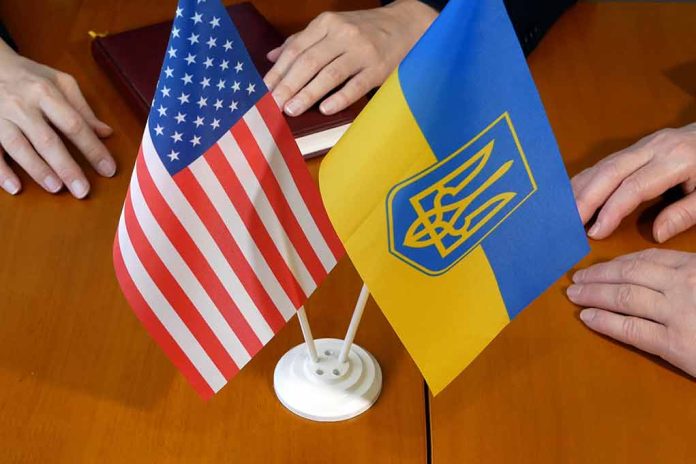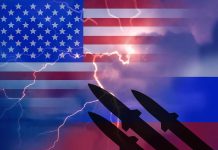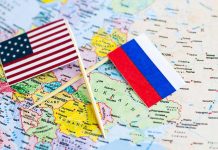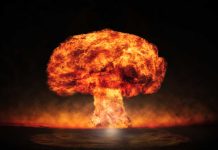
President Donald Trump proposes a deal with Ukraine for rare earth elements in exchange for continued U.S. military aid, sparking discussions about strategic resources and global supply chains.
Top Takeaways
- Trump suggests trading U.S. military aid for Ukraine’s rare earth elements and other resources.
- Ukraine possesses significant deposits of critical minerals, including the largest lithium resource in Europe.
- Over 50% of Ukraine’s rare earth mineral resources are in regions annexed by Russia.
- China dominates the global rare earth supply chain, prompting the U.S. and EU to seek diversification.
- Mining rare earths involves environmental challenges and high costs, complicating extraction efforts.
Trump’s Proposal: A New Approach to Ukraine Aid
President Donald Trump has ignited a debate about U.S. support for Ukraine by proposing a deal that would exchange continued military aid for access to Ukraine’s rare earth elements. This suggestion comes amidst ongoing discussions about the sustainability of U.S. assistance to Ukraine in its conflict with Russia.
“We’re handing them money hand over fist. We’re giving them equipment,” Trump stated, emphasizing the significant financial and material support the U.S. has provided to Ukraine. He added, “We’re looking to do a deal with Ukraine, where they’re going to secure what we’re giving them with their rare earth and other things.”
Ukraine’s Mineral Wealth: A Strategic Asset
Ukraine’s mineral resources, valued at over £12 trillion, have attracted attention from global powers. The country holds commercially relevant deposits of 117 out of 120 most-used industrial minerals, including the largest lithium resource in Europe with half a million tonnes untapped. These resources are crucial for various industries, including technology and energy sectors.
However, the geopolitical situation complicates access to these resources. Over 50% of Ukraine’s rare earth mineral resources are located in regions annexed by Russia, with £6 trillion worth of minerals in areas seized in 2022 alone. The Crimean peninsula, annexed in 2014, holds £165 billion worth of minerals, while the Dnipropetrovsk region, containing £2.8 trillion in mineral resources, faces threats from Russian forces.
Global Rare Earth Supply Chain: China’s Dominance
The global rare earth supply chain is heavily dominated by China, which has invested heavily in refining operations and holds numerous production patents. This dominance has prompted countries like the U.S. and EU to seek diversification of their supply sources to reduce dependency.
President Trump has demanded that Ukraine provide rare earth minerals as payment for the aid the US has provided.
Ukraine has significant deposits of rare minerals including Lithium, titanium, and Zirconium. pic.twitter.com/57p1bKuFVh— Wall Street Mav (@WallStreetMav) February 5, 2025
Rare earth elements, consisting of 17 heavy metals including dysprosium, neodymium, and cerium, are crucial for various industries due to their unique properties. Despite their name, these elements are relatively abundant in the Earth’s crust, with significant deposits found in countries like China, Brazil, Vietnam, Russia, and India.
Challenges in Rare Earth Extraction
While rare earth elements are abundant, their extraction and processing pose significant challenges. Mining these elements involves heavy chemical use, resulting in toxic waste and environmental concerns. This has led to a concentration of production in countries with less stringent environmental regulations, further complicating efforts to diversify the supply chain.
The environmental and economic challenges associated with rare earth extraction highlight the complex nature of Trump’s proposal. While Ukraine’s resources are valuable, developing them would require significant investment and careful consideration of environmental impacts.
Implications for U.S.-Ukraine Relations
Trump’s proposal raises questions about the future of U.S.-Ukraine relations and the broader geopolitical landscape. While the idea of securing strategic resources in exchange for military aid may appeal to some, it also risks being perceived as transactional diplomacy that could complicate international alliances.
As the situation develops, policymakers will need to carefully weigh the strategic value of Ukraine’s rare earth elements against the broader goals of U.S. foreign policy and international security commitments. The outcome of this debate could have far-reaching implications for global resource strategies and the ongoing conflict in Ukraine.






















